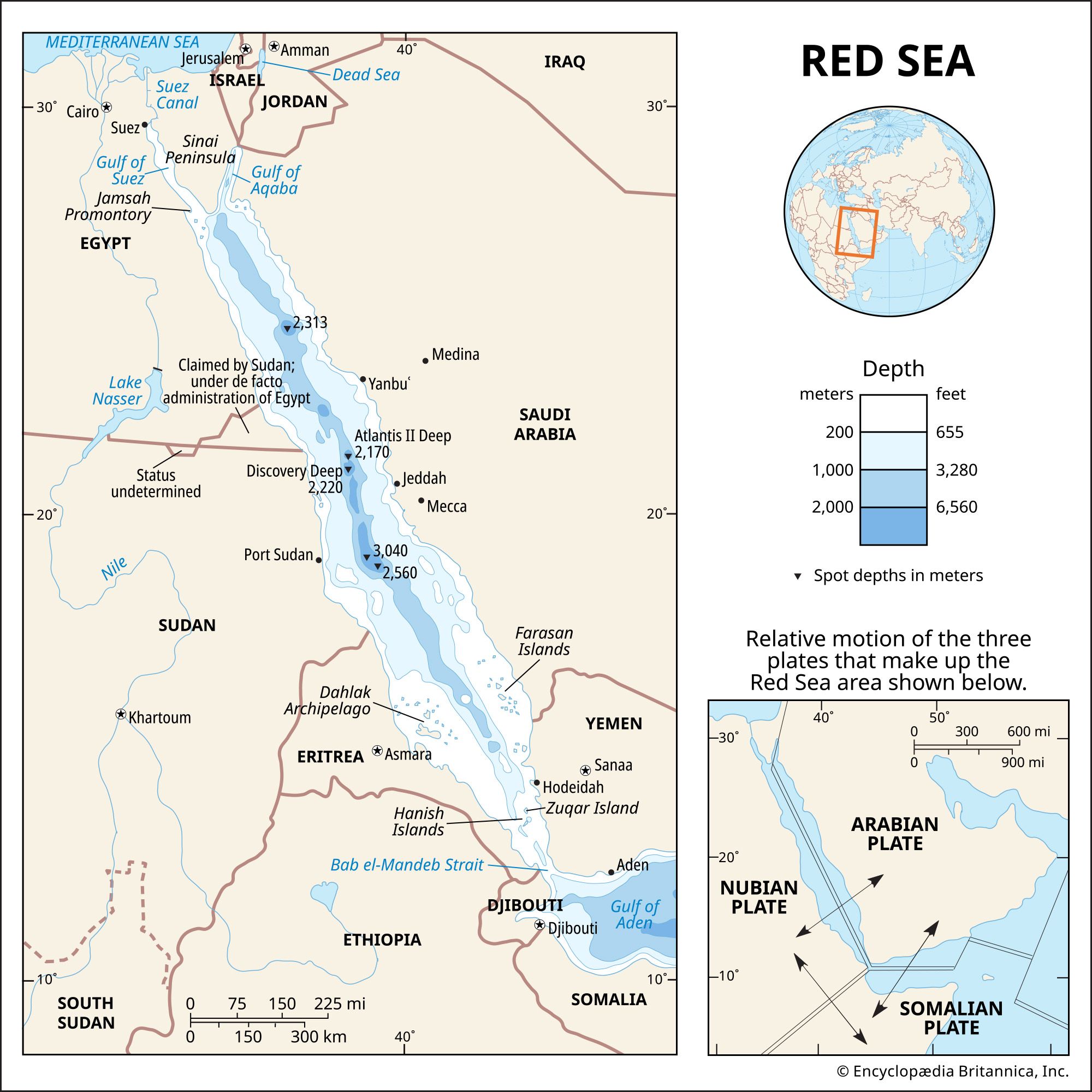Exploring the Deadly Depths of the Red Sea: The Discovery of Brine Pools
In a groundbreaking exploration beneath the waves of the Gulf of Aqaba, scientists have uncovered what can only be described as natural “death traps.” These unique brine pools, located at depths of 4,000 feet, present an inhospitable environment for marine life, with salinity levels that can be up to ten times saltier than typical seawater. This extreme condition, combined with a significant lack of oxygen, renders these pools lethal for unsuspecting marine creatures that venture too close.
The Science Behind the Discovery
A recent study published in Nature Communications provides key insights into these dangerous environments. Conducted by a research team led by Sam Purkis, a distinguished professor and chair of the Department of Marine Geosciences at the University of Miami, the research utilized advanced technology such as remotely operated submersibles and deep-sea probes to explore the deep-sea trenches that lie between Africa and the Arabian Peninsula.
According to Purkis, the extreme conditions observed in these brine pools offer a unique opportunity to study environments that may resemble the early Earth. “Our current understanding is that life originated on Earth in the deep sea, almost certainly in anoxic—meaning without oxygen—conditions,” said Purkis. “These extreme environments could very well mirror those ancient conditions.” This assertion piques the interest of scientists looking for clues about how life on our planet began.
Predators on the Edge
The study’s findings also shed light on the predatory behaviors in relation to these deadly pools. Larger marine predators, drawn to the edges of the brine pools, may lie in wait for unsuspecting prey that become incapacitated due to the toxic conditions within. This predatory dynamic represents a fascinating aspect of the ecological strategies employed in the harsh depths of the sea.
A Window to Earth’s Past
One of the most intriguing implications of the research is the potential for these brine pools to serve as a hidden record of Earth’s history. With few organisms surviving in such extreme conditions, the sediment layers within these pools remain remarkably undisturbed. This preservation could provide scientists with insights into past climate changes and significant geological events throughout history.
“Ordinarily, marine life churns up the seabed, disturbing sedimentary layers,” Purkis explained. “But in these brine pools, the sediments remain exquisitely intact, allowing us to study ocean conditions from ancient times.” This untouched archive presents a unique opportunity for researchers aiming to reconstruct past climate patterns and trace the evolution of Earth’s ecosystems over millions of years.
Similarities with Other Discoveries
Although brine pools have been identified in various locations around the world, such as the Mediterranean Sea, the Gulf of Mexico, and the Antarctic Ocean, the ones found in the Red Sea are particularly notable due to their depth. These comparisons highlight the evolutionary significance of the unique geological formations found in different oceanic regions.
The Quest for Extraterrestrial Life
The implications of this research extend beyond the confines of our planet. The extreme environments present in these brine pools could provide valuable reference points in the quest for extraterrestrial life. Researchers propose that other “water worlds” beyond our solar system may feature similar conditions, raising important questions about the potential for life elsewhere in the universe.
As scientists continue to unlock the mysteries of these brine pools, the findings might lead to a deeper understanding of life’s resilience in extreme environments, both on Earth and beyond. This exploration not only enriches our knowledge of marine ecosystems but also contributes to the broader scientific discourse surrounding the origins of life.
Conclusion: A Modern-Day Biblical Parallel?
The research also evokes echoes of historical and biblical narratives, particularly the story of Moses parting the Red Sea. While the conditions uncovered in these depths are quite different from the miraculous tales of ancient scripture, the juxtaposition highlights the awe-inspiring nature of our planet’s geology and oceans. As these researchers delve deeper into the realms that resemble the very beginnings of life, they remind us of the complex interconnections between our planet’s history, its ecosystems, and the potential for life beyond.
In closing, the ongoing studies on brine pools in the Red Sea not only provide significant revelations about our planet’s past but also challenge our understanding of life’s tenacity in extreme environments. As technology continues to evolve, so too does our capability for exploration, promising exciting discoveries that could redefine our knowledge of both life on Earth and the universe beyond.
